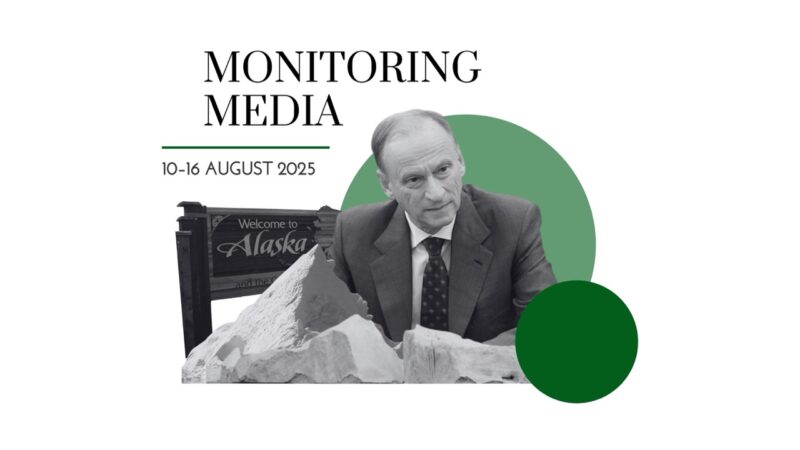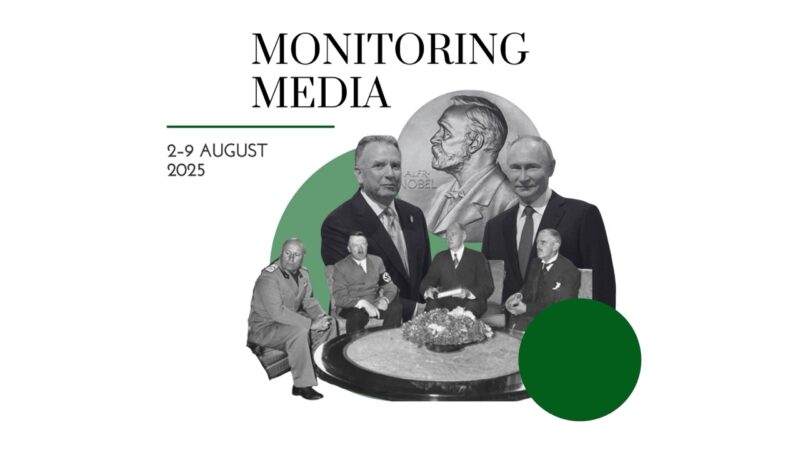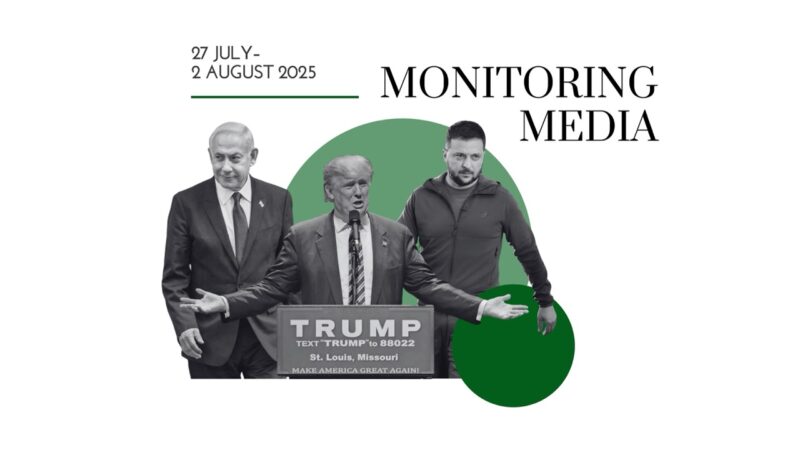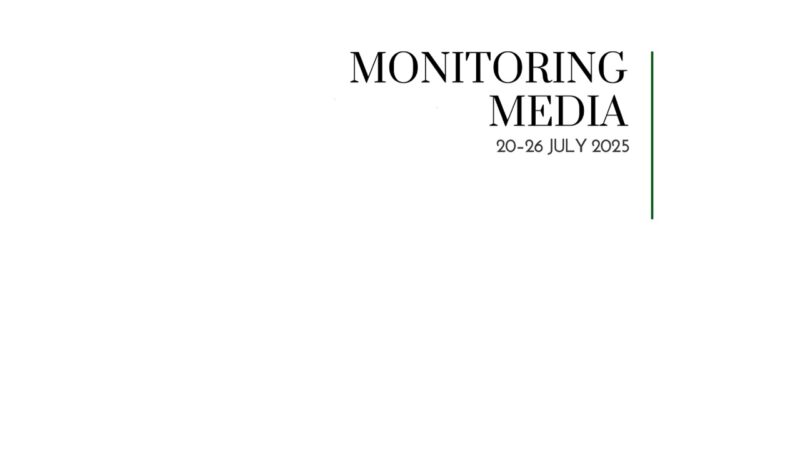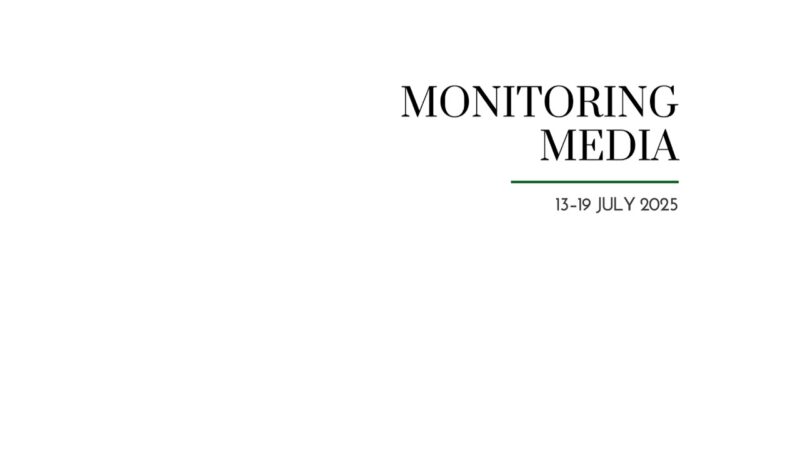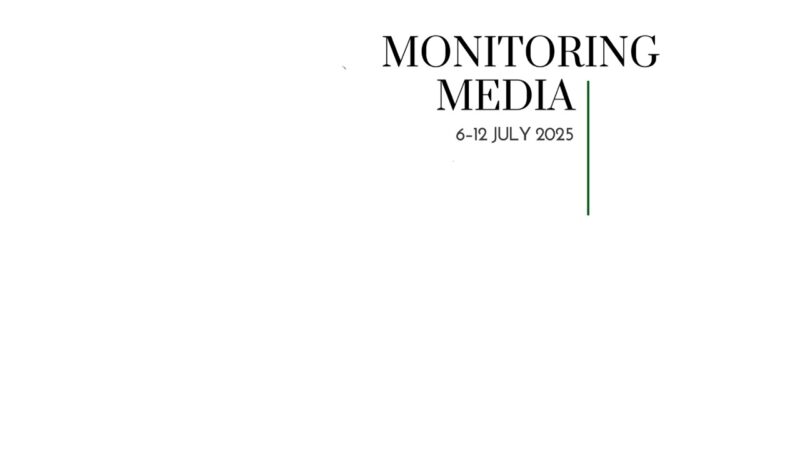Army is Ukraine’s greatest strength
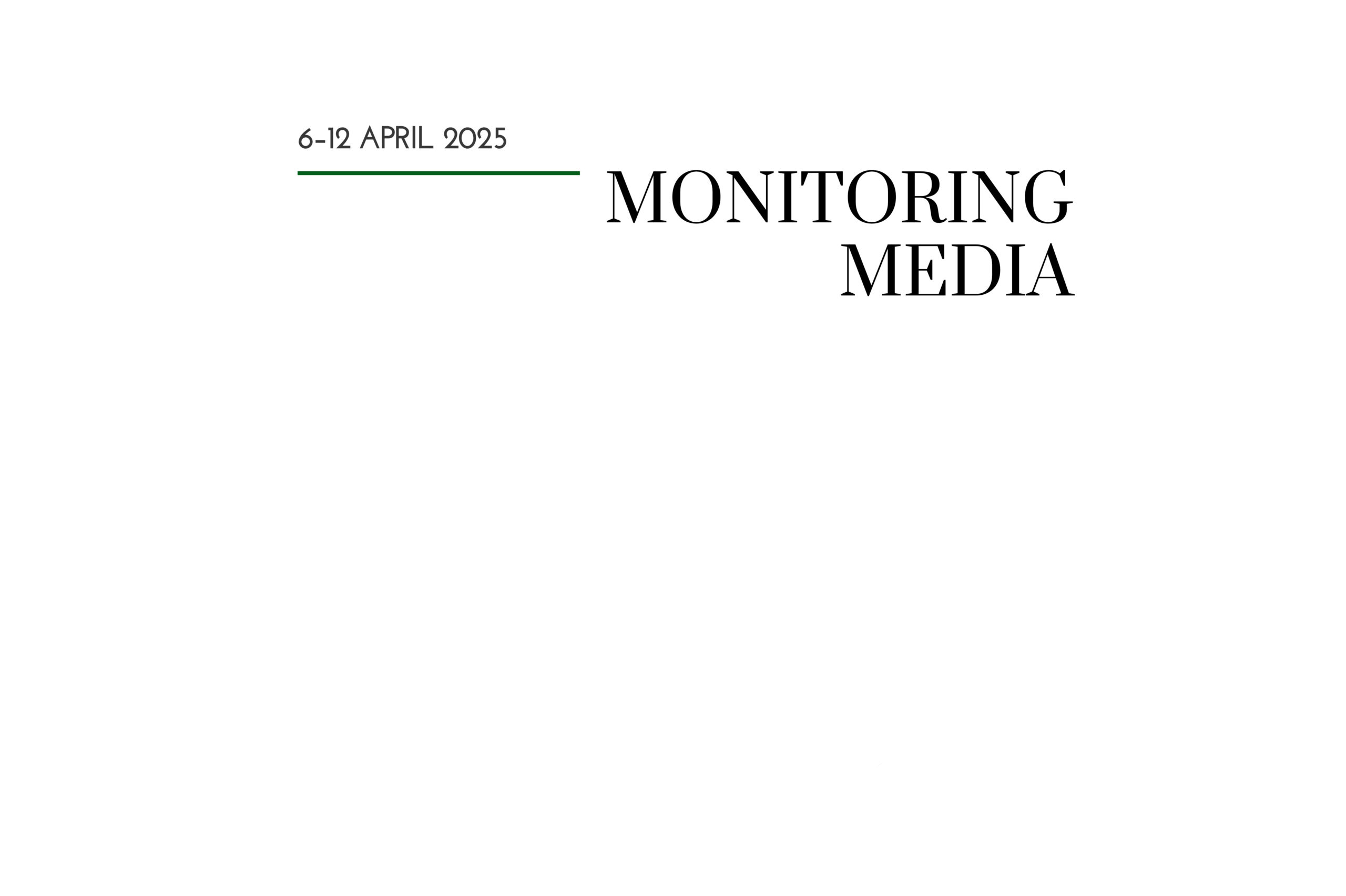
CIUS weekly report on North American media coverage of Ukrainian affairs, 6–12 April 2025
Six publications (Foreign Policy, The National Interest, Foreign Affairs, The Economist, The New York Times, and The Washington Post) were selected to prepare this report on how Ukraine has been portrayed in the North American press during the past week. The sample was compiled based on their impact on public opinion as well as on their professional reputation, popularity among the readership, and topical relevance. These publications represent centrist viewpoints on the political spectrum.
This MMS report covers only the most-read and relevant articles about Ukraine, as ranked by the respective North American publications themselves in the past week. Its scope covers promoted articles on home pages and articles from special sections on Ukraine, with the hashtag #Ukraine, from the paper editions of the publications, and about Ukraine from opinion columns and editorials.
Featured topics
- The world and Ukraine: army is Ukraine’s greatest strength; another way to obtain rare earth minerals; Europe should buy military equipment from Ukraine.
- Russia at war: Moscow is main culprit behind the Russo-Ukrainian war; Russia’s war machine fueled by internal brutality; Trump’s tariffs squeeze Russia’s war budget.
MMS summaries
Army is Ukraine’s greatest strength. Anton Drobovych (National Interest) insists that Ukraine’s strong army is a most valuable asset for the US—much more so than rare earth resources, which have been the subject of much discussion in recent weeks. “As of today, Ukraine ranks sixth in the world by the size of its military. In Europe, the Ukrainian army is the largest in terms of personnel…greater than the combined forces of France, Germany, Italy, and the United Kingdom.” The issue is not only in numbers but also in the real combat experience that Ukrainians have acquired in the war waged against them by a state that is many times superior in terms of resources: “Ukraine is the only non-authoritarian country in the world whose military has extensive, successful experience in employing naval, aerial, and ground forces, along with drones, in large-scale combat against a stronger adversary. Ukraine already has dozens of experienced military units and special forces specializing exclusively in the use of unmanned systems. For example, the overwhelming majority of destroyed Russian tanks (over 3,700 confirmed destroyed between 2022 and 2025) were destroyed by drones.… Likewise, unmanned naval systems became one of the key tools that allowed Ukrainians to almost completely destroy the Russian Black Sea Fleet, forcing its remnants to retreat to distant Russian ports.” Ukraine’s armed forces would be able to repay the United States, just as Washington once repaid Paris for its support in the Revolutionary War: “The Americans did not remain indebted, and for several centuries maintained gratitude toward the French. They helped in World War I (the involvement of American Expeditionary Forces under General John Pershing in the battles for France) and in the decisive battles of World War II (notably, the Normandy landings led by General Dwight Eisenhower and the subsequent liberation of France from the Nazis).” According to Drobovych, “in order to continue deterring the Russians, Ukraine will maintain a large, capable, and modern army. Similarly, hundreds of thousands of Ukrainian soldiers, with vast experience in modern warfare, will return from the front and seek new employment. They could become a solid foundation for a new European army, replacing US troops, [but] they could also form part of a completely new security component proposed by the United States, relying on Ukrainian allies and considering European interests.”
Another way to obtain rare earth minerals. Elisabeth Braw (Foreign Policy) argues that the US should recycle its rare earth minerals rather than seize Ukrainian ones. In the context of global trends, Washington’s dependence on Beijing for processing rare earth minerals is dangerous. But it is unreasonable to demand that Kyiv sign an unfair agreement. First, it will be extremely difficult to extract the minerals: “Three of Ukraine’s four major rare-earth deposits are within or near Russian-controlled areas.” Second, no one knows whether such investments will be profitable, as the last study of rare earth minerals in Ukraine was conducted in the 1960s. The author describes a better idea that will make the US independent of anyone, create jobs domestically and preserve the environment: “The United States throws away nearly 7 million tons of e-waste each year, and as elsewhere, only the easiest parts, such as iron, are recycled. That’s doubly wasteful because discarded gadgets often end up in landfills, where they can poison soil and water—and because they contain the very rare-earth metals that are so desperately needed in new electronic gadgets.” Such a decision would not create difficulties for other countries, including Ukraine, and would reduce the US dependence on China.
Moscow is the main culprit behind the Russo-Ukrainian war. M.E. Sarotte (Foreign Affairs) claims that the peace agreement between Kyiv and Moscow, which has no legal force and is based on false historical assumptions, can only facilitate new acts of Russian aggression. President Donald Trump’s erroneous judgments about the reasons for Russia’s war against Ukraine are laying a ticking time bomb: “If Trump views Ukraine as the aggressor and Russia as the victim, he may concede a great deal to Moscow. He could conclude a peace settlement that not only lacks safeguards against the resumption of Russian aggression but also diminishes NATO’s ability to defend its European members.” The search for alternative perpetrators of Russia’s war against Ukraine does not bring a just and sustainable peace any closer. According to Sarotte, “Any settlement resting on a false account of how and why the war began will ultimately yield an ineffective deal. If Trump and his team negotiate a peace accord on the basis of distorted history, they will fail to secure the measures necessary to prevent Putin from resuming aggression once Russian forces reconstitute.”
Europe should buy Ukrainian military equipment. Analysis by the Economist finds that the mood in Kyiv is more confident now than during last year’s spring offensive, despite the circumstances. The reason for this confidence is Ukraine’s reduced dependence on foreign military equipment: “The country’s defence industry, largely abandoned after the collapse of the Soviet Union, is once again firing on all cylinders. This year production is expected to amount to around $15bn-worth of armaments, up from just $1bn in 2022, the year Russia’s full-scale invasion began.” Drones have changed the picture of modern warfare, and Ukraine has become a leading producer: “Churned out in their millions by newly formed Ukrainian companies, they are cheaper and often better than Western versions. Short-range drones can spot anything that moves, swooping in to take out a tank or an exposed Russian soldier. Longer-range drones and missiles can hit command centres, ammunition dumps, barracks and industrial targets.” Thanks to drones, Ukraine is compensating for its limited human resources compared to Russia: “That is why Russia has been battling for almost nine months, at gruesome cost, to take the small city of Pokrovsk (with a pre-war population of 60,000).” Importantly, Europe not only provided Ukraine with military equipment but also invested in development of the Ukrainian defence industry: “[Ukrainian officials] say it has the capacity to produce around $35bn-worth of equipment this year, if only the government could afford to place more contracts.” According to the Economist, “Individual European countries, led by Denmark, have already started down this path. These efforts need to be built on. Give Ukrainian defence firms more money, and they will make their own tools to keep Russia at bay.”
Trump’s Russia reset suggests sharp break in US foreign policy. Jonathan Mahler (New York Times) observes that President Donald Trump’s second term marks a radical realignment in US foreign policy toward Russia, suggesting an ideological pivot that breaks with America’s post–World War II role as a defender of liberal democracy. Trump’s administration has embraced a series of pro-Kremlin moves—including rejecting a UN resolution that condemns Russia and blaming Ukraine for its own invasion—while elevating officials like Tulsi Gabbard, whom Russian state media have called a “comrade.” The author interviews Sasha Havlicek of the Institute for Strategic Dialogue, who notes, “If, in fact, we are witnessing a total ideological shift of America…and an alignment with Putin and other authoritarian nationalists…there couldn’t be anything more dramatic than that.” This shift, according to Mahler, is not merely geopolitical but rooted in a deeper cultural and ideological alignment between the American far right and Putin’s vision of traditionalist, authoritarian governance. As far back as 1995, US conservative figures collaborated with Russian academics to promote “a global network of like-minded conservatives to fight feminism, homosexuality, and abortion.” Over time, this alliance expanded to include American commentators and political thinkers who increasingly viewed Russia as a model for resisting liberal social change. “In the culture war for mankind’s future, is he one of us?” asked Patrick Buchanan, former Republican presidential candidate, in 2013, while describing Putin’s crackdown on LGBTQ rights and annexation of Crimea as part of a moral and religious crusade. While Trump and his allies in the Republican Party increasingly see Putin as a political and cultural ally, this view remains largely out of step with the American public. A March Quinnipiac poll cited by the author shows that only 7 percent of voters have a favourable opinion of Putin, and 55 percent disapprove of Trump’s handling of the war in Ukraine. Nevertheless, a once-fringe set of ideas has gained outsized influence in shaping US policy. As Jacob Heilbrunn explains, “You’ve just got a new [elite] that has come into power now.” This reorientation reflects not a broad ideological consensus, Mahler writes, but rather the rise of a powerful minority within the Republican Party that now directs the country’s approach to Russia.
Trump’s tariffs squeeze Russia’s war budget. Mary Ilyushina (Washington Post) writes that US President Donald Trump’s sweeping tariffs, while excluding Russia directly, are still impacting the Kremlin’s war economy by contributing to falling global oil prices—Russia’s key revenue source. Urals crude dropped to around $52 per barrel, far below the $70 benchmark set in Russia’s 2025 budget, thus weakening the country’s ability to sustain its military spending. The author quotes central bank chief Elvira Nabiullina who warned lawmakers that continued global trade disruption from tariff wars poses significant risks: “It usually leads to a decrease in world trade, the world economy and perhaps demand for our energy.” This pressure coincides with signs of economic stress inside Russia, including a 17 percent year-on-year decline in oil and gas revenues in March and high interest rates that have drawn rare public criticism from top industrial leaders. As Russia becomes increasingly dependent on Chinese commodity purchases amid its war spending, a downturn in China’s economy could further expose Moscow’s financial fragility. Economists argue that this moment offers Western policymakers new leverage in terms of sanctions, given that Russia’s typical defences—strong oil prices and stable trade partnerships—are eroding. “There is a window of opportunity now, even though it came about for the wrong reasons,” said Janis Kluge, a German economist specializing in Russia. Meanwhile, Ukrainian officials hope the oil price slump will help choke off Russian war funding. “The lower the oil prices, the less money Russians will have to fund their war,” said Volodymyr Zelensky’s chief of staff. Still, analysts caution that the Kremlin will likely prioritize war spending, even as budget constraints force broader fiscal tightening.
Russia’s war machine fueled by internal brutality, record battlefield losses. Amelie Tolvin (Foreign Policy) notes that Russia’s staggering battlefield losses in Ukraine—now reportedly exceeding all of Moscow’s post-1945 wars combined—are unprecedented. She highlights the role of systemic internal violence within Russia’s military ranks as a key factor sustaining its “meat grinder” tactics. Russian troops, often described as “disposable infantry,” are subjected to extreme mistreatment by commanders and fellow soldiers, enabling a culture in which brutality is both normalized and weaponized to maintain obedience. This ingrained violence is not new; it is rooted in dedovshchina, a brutal hazing system that conditions recruits to become “both its victims and perpetrators.” Tolvin explains: “Soldiers’ accounts describe treatment by senior conscripts involving extortion, beatings, and rape,” a process that breaks individual will and fosters collective complicity. Despite horrific casualties, desertion remains limited, and acts of resistance are rare, as troops understand “the consequences of any dissent will be extreme.” On the battlefield, this internal culture of violence not only persists but is escalating, reinforcing Russia’s tactics of attrition and impunity. Russian commanders have reportedly used “barrier troops to kill or otherwise stop [their] own soldiers from retreating,” and deaths from internal violence are often disguised as combat losses or desertion. In some cases, soldiers have been executed, thrown into “punishment pits,” or placed in detention for disobedience. The result is twofold: a military force that enforces compliance through terror and one where those exposed to violence become active perpetrators of atrocities. As seen in places like the Kyiv suburb of Bucha, the Russian military rewards units accused of war crimes, further “normaliz[ing] and entrench[ing] lethal violence in the Russian ranks.” This cycle ensures continued brutality against Ukrainians and perpetuates a culture of silence, fear, and systematic abuse within the Russian military itself, Tolvin concludes.
